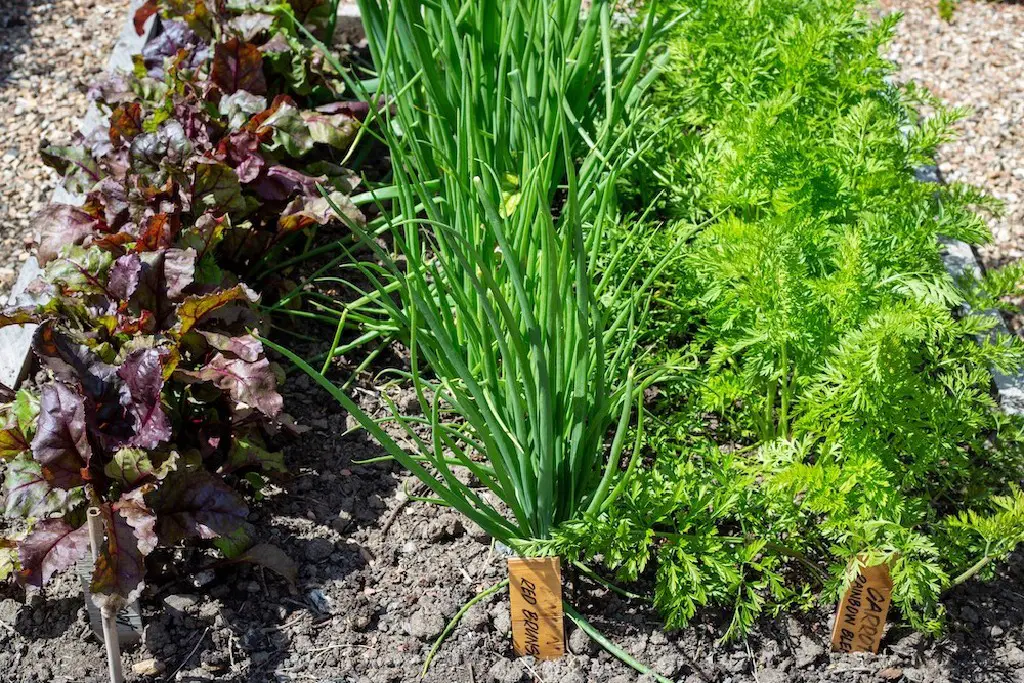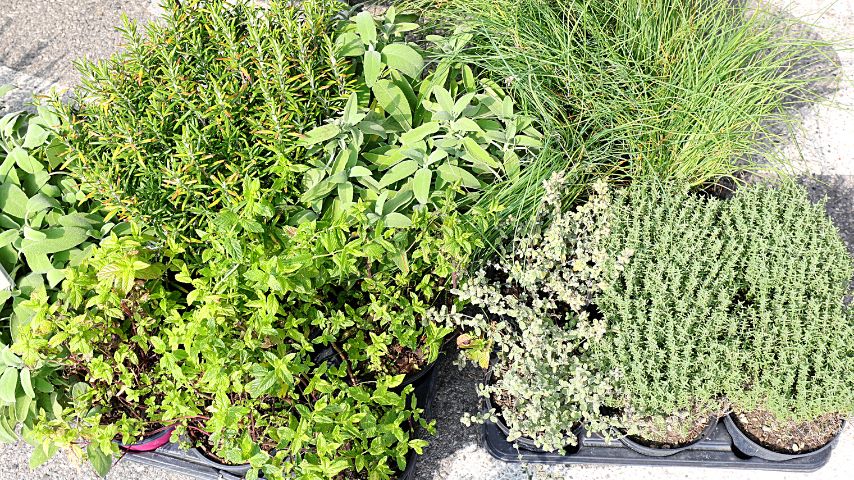Sage As A Magical Companion Plant: How To Use Its Aromatic Properties To Enhance Your Garden
Sage is a versatile herb that has been used for centuries for its medicinal, culinary, and magical properties. It is a member of the mint family and is native to the Mediterranean region. Sage is known for its strong, aromatic scent, which is said to have cleansing and purifying effects.
In the garden, sage can be used as a companion plant to repel pests and attract beneficial insects. It is also a good choice for attracting pollinators, such as bees and butterflies. Sage can be grown in full sun or partial shade and prefers well-drained soil.
In addition to its practical uses, sage is also a popular herb in magic and witchcraft. It is often associated with wisdom, protection, and purification. Sage can be used in a variety of magical rituals, including smudging, spellcasting, and divination.
How to Use Sage as a Magical Companion Plant
There are many ways to use sage as a magical companion plant. Here are a few ideas:
- Plant sage near other herbs that you want to protect, such as basil, rosemary, and lavender.
- Use sage to repel pests. Sage is a natural insect repellent, so it can be used to keep pests away from your garden. You can plant sage near plants that are susceptible to pests, or you can make a sage tea to spray on your plants.
- Attract beneficial insects. Sage is a good plant for attracting pollinators, such as bees and butterflies. If you want to attract these insects to your garden, plant sage near flowers that they like.
- Use sage for smudging. Smudging is a ritual that involves burning herbs to cleanse and purify a space. Sage is a popular herb for smudging, and it is said to have the power to remove negative energy.
- Use sage in spellcasting. Sage can be used in a variety of magical spells. For example, you can use sage to attract love, money, or good luck.
- Use sage for divination. Sage can be used for divination, such as reading tea leaves or tarot cards. Sage is said to enhance intuition and clarity, which can be helpful when interpreting divination results.
Sage Aromatic Properties
The aromatic properties of sage are also beneficial for the garden. The strong scent of sage can help to deter pests, such as mosquitoes, flies, and ants. Sage can also help to attract beneficial insects, such as bees and butterflies.
The scent of sage can also help to improve the overall health of the garden. The volatile oils in sage have antimicrobial properties, which can help to protect plants from disease. Sage can also help to improve the pollination rate of plants.
How to Use Sage Aromatic Properties to Enhance Your Garden
There are a few ways to use the aromatic properties of sage to enhance your garden. Here are a few ideas:
- Plant sage near plants that are susceptible to pests. The strong scent of sage can help to deter pests from these plants.
- Make a sage tea and spray it on your plants. The antimicrobial properties in sage can help to protect your plants from disease.
- Dry sage leaves and place them in sachets around your garden. The scent of sage will help to deter pests and attract beneficial insects.
- Burn sage leaves in your garden. The smoke from burning sage can help to cleanse and purify your garden.
Conclusion
Sage is a versatile herb that has many benefits for the garden. It can be used as a companion plant, a pest deterrent, an insect attractor, and a cleansing herb. The aromatic properties of sage can also help to improve the overall health of the garden. If you are looking for a way to enhance your garden, sage is a great option.
Sage is a versatile herb that can be used in cooking, medicine, and even as a companion plant. As a companion plant, sage can help to repel pests, attract beneficial insects, and improve the flavor of other plants.
Some of the best companion plants for sage include:
- Brassicas: Sage can help to repel cabbage moths, cabbage loopers, and other pests that attack brassicas.
- Carrots: Sage can help to repel carrot rust flies and improve the flavor of carrots.
- Strawberries: Sage can help to deter pests and enhance the strawberry flavor.
- Tomatoes: Sage can repel flea beetles and attract beneficial insects to tomato plants.
- Rosemary: Sage and rosemary are both Mediterranean herbs that enjoy similar growing conditions. They can be planted together to help each other thrive.
If you're interested in learning more about sage as a companion plant, I recommend visiting Gardenia Inspiration. This website has a wealth of information on the topic, including a list of companion plants, tips for planting and caring for sage, and recipes that use sage.
FAQ of sage as a companion plant
FAQs about Sage as a Companion Plant
1. What are some good companion plants for sage?
Sage is a great companion plant for many other vegetables and herbs. Some of its best companions include:
- Brassicas: Sage repels cabbage moths, cabbage loopers, cabbage maggots, cabbage worms, and black flea beetles, all of which attack brassicas.
- Carrots: Sage helps to improve the flavor of carrots.
- Onions: Sage and onions help to repel each other's pests, so they can be planted together to protect both plants.
- Tomatoes: Sage helps to deter tomato hornworms and other pests.
- Herbs: Sage can be planted with other herbs, such as rosemary, thyme, and lavender. These herbs help to attract beneficial insects, which will then prey on pests.
2. What are some plants that should not be planted near sage?
There are a few plants that should not be planted near sage, as they can compete for nutrients or attract pests. These plants include:
- Basil: Basil and sage compete for the same nutrients, so they should not be planted together.
- Potatoes: Sage can attract potato beetles, so it is best to avoid planting them near potatoes.
- Cucumbers: Cucumbers can attract cucumber beetles, which can also damage sage plants.
- Peppers: Sage can attract pepper maggots, so it is best to avoid planting them near peppers.
3. What are the benefits of companion planting with sage?
There are many benefits to companion planting with sage. Some of these benefits include:
- Pest control: Sage can help to repel a variety of pests, including cabbage moths, cabbage loopers, cabbage maggots, cabbage worms, black flea beetles, tomato hornworms, and cucumber beetles.
- Disease resistance: Sage can help to improve the disease resistance of other plants. For example, it can help to protect tomatoes from late blight.
- Flavor enhancement: Sage can help to enhance the flavor of other vegetables and herbs. For example, it can be used to make tomato sauce or to flavor roasted vegetables.
- Attracting beneficial insects: Sage attracts beneficial insects, such as ladybugs and lacewings, which prey on pests.
4. How far apart should sage plants be planted?
Sage plants should be spaced about 18 inches apart. This will give them enough room to grow and spread.
5. When is the best time to plant sage?
Sage can be planted in spring or fall. If you are planting sage in spring, wait until the soil has warmed up to at least 60 degrees Fahrenheit. If you are planting sage in fall, plant it before the first frost.
Image of sage as a companion plant
5 different images of "sage as a companion plant" from Pinterest:
- Image 1: Sage and carrots. Sage helps to repel carrot rust flies, which can be a major pest for carrots.

- Image 2: Sage and tomatoes. Sage can help to improve the flavor of tomatoes, and it also helps to deter pests such as whiteflies and spider mites.
- Image 3: Sage and lavender. Sage and lavender are both herbs that attract beneficial insects, such as ladybugs and hoverflies. These insects help to control pests in the garden.

- Image 4: Sage and strawberries. Sage can help to deter pests such as slugs and snails, which can be a problem for strawberries. It can also help to improve the flavor of strawberries.

- Image 5: Sage and beans. Sage can help to improve the growth of beans, and it also helps to deter pests such as aphids and bean beetles.

Post a Comment for "Sage As A Magical Companion Plant: How To Use Its Aromatic Properties To Enhance Your Garden"